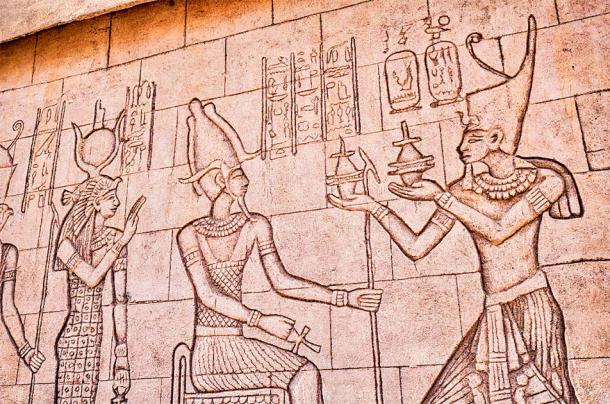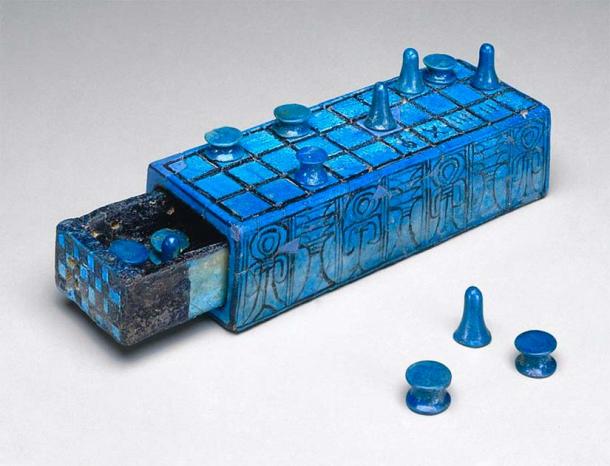
A Day in the Life of an Egyptian Pharaoh
Ancient Egypt, one of the greatest civilizations to have ever existed, spanned a vast timeline, lasting for approximately 3,000 years. For much of that time, it was ruled over by god-kings known as pharaohs. These men (and sometimes) women wielded immense power and lived lives of almost unimaginable wealth and luxury. Yet their lives were also full of obligations and mundane daily tasks. Which raises the question, what was a day in the life of an Egyptian pharaoh really like? From waking up in the morning to courtly affairs, from the mesmerizing realm of rituals and worship to leisure and entertainment, and from reflections on mortality to the setting sun, let's delve into the extraordinary experiences that shaped the life of an Egyptian pharaoh.
Living Like an Egyptian Pharaohm, Generally Speaking
Before we begin, a quick disclaimer. Ancient Egypt first emerged as a civilization over 5000 years ago around 3100 BC and lasted for roughly 3,000 years. During that time, it went through various periods, including the Old Kingdom, the Middle Kingdom, and the New Kingdom, as well as myriad intermediate periods and other outliers.
Throughout these eras Egypt was ruled over by a lot of different pharaohs, famous ones like Tutankhamun, Ramses II, and Cleopatra, and countless whose names have been lost to history.
Their daily lives would have largely been dictated by what era they lived in and the state of the kingdom at that time. Wartime is obviously vastly different from peacetime. So, this article is meant to be a general outline of what a typical pharaoh's life would have been like, but it is somewhat of a generalization.

Daily rituals of pharaohs with their assistants and entourage. (Public Domain)
Waking Up Like a Pharaoh
Being a pharaoh was a 24/7 job and their awakening marked the commencement of a day filled with regal duties and spiritual obligations. A pharaoh’s day would have begun with the gentle touch of attendants, who carefully roused the pharaoh from their slumber. This act, often accompanied by prayers and incantations, served as a reminder of the pharaoh's divine nature and their pivotal role in maintaining cosmic order.
Once awake, one of the pharaoh’s first jobs of the day was to partake in purifying rituals, cleansing their body and mind before engaging in the affairs of the kingdom. The pharaohs were seen as gods among men and their clothing reflected this. They adorned themselves with intricate and resplendent regalia, donning the traditional symbols of authority and power.

Frescoes with carved figures depicting Egyptian Pharaohs in a purifying ritual. (EdNurg/Adobe Stock)
With each daybreak, the pharaoh's awakening symbolized the renewal of life and the continuation of their divine mission. It set the stage for the grand theater of governance and spirituality, where the pharaoh's every action held immense weight and consequence.
Getting Down to Business: Courtly Affairs and Administrative Duties
Once these morning rituals were over and the pharaoh was suitably dressed, it was time to get down to business. The pharaohs were heads of state and much of their daily life revolved around the intricate web of courtly affairs and administrative responsibilities.
Surrounded by a retinue of advisors, scribes, and high-ranking officials, the pharaoh presided over a complex bureaucracy that governed the various aspects of Egyptian society. A typical day was consumed by matters of state, as they oversaw the administration of justice, taxation, and the allocation of resources.

An Egyptian Pharaoh was the supreme power and central figure of the state and was the obligatory intermediary between the gods and humans. (Mbmrock/CC BY-SA 4.0)
This monotony would have been broken up by audiences with foreign dignitaries, ambassadors, and provincial governors which were a common occurrence. It was part of the pharaoh’s job to maintain diplomatic relations with allies and to ensure the loyalty of Egypt’s numerous vassal states. Negotiations, alliances, and strategic decisions were made within the opulent chambers of the palace, shaping the destiny of the kingdom.
Furthermore, the pharaoh functioned as the supreme lawgiver, enacting decrees, and regulations to maintain order and harmony throughout the land. In extreme cases, such as those involving treason or crimes against the kingdom, the pharaoh might preside over the criminal case themselves.
Their verdicts were seen as final and binding, and they had the power to issue pardons or impose severe punishments, including exile, corporal punishment, or even execution. Their words carried the weight of divine authority, and their judgments were respected and followed by both nobles and commoners alike.
Wartime
In times of war, these matters of state took a back seat. As the ultimate rulers and military commanders, pharaohs held significant authority and responsibility in leading their armies and ensuring the defense and expansion of their kingdoms.
During times of conflict, many pharaohs would personally lead their armies into battle, demonstrating their bravery and prowess as warriors. They served as both political and military leaders, commanding their forces with strategic acumen and inspiring their troops with their presence on the battlefield.
Much of a pharaoh’s day would have been spent consulting with their military advisors and generals to devise military strategies, plan campaigns, and coordinate troop movements. Some pharaohs would also have taken time out of their busy schedules to oversee the training and equipping of soldiers personally, ensuring they were well-prepared.
- Audacious Attempt to Crane Lift Away 10-tonne Pharaonic Statue Foiled
- AI Technology Used to Recreate the Face of Biblical Pharaoh
Religious Figureheads: Rituals and Worship
In ancient Egypt, the state and religion were deeply entwined, and pharaohs were seen as the intermediary between the mortal realm and the divine. As such engagement in rituals and worship was central to the life of an Egyptian pharaoh.
At the heart of the pharaoh's religious duties lay the veneration of the gods. With unwavering devotion, they performed daily offerings and prayers in the inner sanctums of temples, seeking divine favor and guidance.
Besides these daily rituals, at certain times of the year the pharaoh would have devoted even more of their daily schedule to religious worship. For example, one of the most significant ceremonies was the Sed festival, a grand jubilee celebrating the pharaoh's reign and reaffirming their divine legitimacy. This momentous event involved processions, feasting, and elaborate rituals that highlighted the pharaoh's power and authority.

The annual flooding of the Nile occasionally was said to be the Arrival of Hapi. This flooding symbolised fertility. To bestow a bountiful inundation sacrifices were made such as throwing a beautiful virgin into the sacred water. (TIMEA/CC BY-SA 2.5)
Another example was the annual flooding of the Nile that happened between June and September. This annual flood was not only crucial for agricultural productivity but marked an essential event in the religious and cultural calendar of ancient Egypt. The Egyptians believed that the floodwaters were a gift from the gods, specifically from the god Hapi, who personified the Nile's inundation. The flood was seen as a sign of divine favor and prosperity.
During this flood the pharaoh, embodying the god Osiris, conducted rituals to ensure the fertility of the land and the abundance of crops. This act of devotion highlighted the pharaoh's responsibility as the provider and sustainer of the people.
The pharaoh would make offerings and prayers to the gods, expressing gratitude for the annual flooding and seeking continued blessings for a bountiful harvest. Sacrifices of animals, food, and other offerings were made to ensure the goodwill of the deities and the prosperity of the kingdom.
Overseeing the Temples
It wasn’t all rituals and sacrifices. The pharaoh played a pivotal role in the construction and renovation of temples dedicated to the various Egyptian gods and goddesses. This meant they spent a fair amount of their time helping to plan and oversee various major building projects.

The entrance into the Great Temple of Abu Simbel, with four statues of Ramesses II. (auimeesri /Adobe Stock)
For example, Pharaoh Ramses II (reigned 1279-1213 BC) commissioned the Temple of Abu Simbel, dedicated to himself and the gods Amun-Ra, Ra-Horakhty, and Ptah. It was a massive undertaking, featuring colossal statues of Ramses II, including the famous seated statues at the entrance.
Some pharaohs spent more time than others dedicating themselves to the state religion. While some were happy to follow the status quo and just do what was expected of them, others went a step further.
Akhenaten, who ruled the 18th Dynasty of Ancient Egypt from around 1334-1353 BC abandoned Egypt’s traditional polytheism and replaced it with his own religion, Atenism (a more monotheistic religion based around Aten). This was no small task and one can imagine it took up much of his time as ruler.
Leisure Time: Rest and Relaxation
Thankfully for the pharaohs, it wasn’t a case of all work and no play. Amidst the weighty responsibilities of governance and religious obligations, the Egyptian pharaohs also enjoyed moments of leisure and entertainment.
The pharaohs lived in extravagant palaces which featured beautifully landscaped gardens, providing serene sanctuaries where the ruler could retreat from the bustling affairs of the state. These tranquil oases offered a reprieve from the outside world, allowing the pharaoh a much-needed chance to find solace in the midst of natural beauty.
Sports
Many of the pharaohs were also keen sportsmen and sporting activities held a prominent place in the pharaoh's leisurely pursuits. They were a fantastic way not just to unwind but also served as a display of their strength, bravery, and skill as rulers.
Ramses II, who reigned from 1279-1213 BC is known to have devoted much of his downtime to chariot racing and was an accomplished charioteer on and off the battlefield. As a warrior pharaoh, Ramses II would have actively taken part in chariot races, both for recreation and to demonstrate his skill and bravery.

Ramses II fighting in a chariot at the Battle of Kadesh with two archers, one with the reins tied around his waist to free both hands. Relief from Abu Simbel temple. (Warren LeMay from Cullowhee, NC, United States/CC0)
Hunting was another popular leisure activity. King Tutankhamun, though his reign was relatively short, was an avid hunter. Scenes from his tomb depict him engaging in hunting expeditions, pursuing various animals like desert ibex, waterfowl, and even lions.
Likewise, Amenhotep III was a pharaoh known for his love of hunting. He organized grand hunting expeditions, often accompanied by his queen, Tiye. The artwork from his reign portrays him engaging in lion hunting, one of the most prestigious and dangerous forms of hunting in ancient Egypt.
Arts
Music and dance were integral parts of the pharaoh's leisure time. The pharaoh would be entertained by talented musicians and dancers who performed in lavish banquets and private gatherings, creating an atmosphere of joy and merriment (and giving the pharaoh yet another chance to show off).
Board games and intellectual pursuits also occupied the pharaoh's leisure hours. Games like Senet and Mehen were popular choices, challenging the pharaoh's strategic thinking and offering moments of friendly competition with courtiers and advisors.

Senet, one of the oldest known board games, inscribed for Amenhotep III with separate sliding drawer, 1390-1353 BC. It consists of 10 or more pawns on a 30 square playing board. (Charles Edwin Wilbour Fund/Wikimedia Commons)
Through these leisurely activities, the pharaoh could momentarily set aside the weight of their responsibilities, rejuvenate their spirit, and foster a sense of camaraderie among their companions. The royal retreats provided a space where the pharaoh could revel in the pleasures of life, indulging in the diverse forms of entertainment available to them.
Reflections on Mortality: Preparations for the Afterlife
Rather macabrely, when they weren’t busy running the kingdom, engaging in rituals, or enjoying some downtime, pharaohs spent much of their time pondering their own mortality. For an Egyptian pharaoh, the awareness of mortality was an ever-present reality, driving them to meticulously prepare for the afterlife.
The pharaoh's preparations for the afterlife began long before their earthly departure. Elaborate tombs, such as the iconic Valley of the Kings, were meticulously carved into mountainsides, serving as eternal resting places for the ruler's mummified remains. These tombs were adorned with intricate hieroglyphs and elaborate artwork, depicting scenes from the pharaoh's life, and providing guidance for their journey into the afterlife.
Reflections on mortality were an integral part of the pharaoh's life, shaping their actions and influencing their reign. By meticulously attending to the rituals and practices associated with death and the afterlife, the pharaoh looked to secure their place among the gods and guarantee eternal prosperity for themselves and their kingdom.
The Sun Sets: Pharaohs After Dark
With the setting sun, the pharaoh's engagement in public affairs and ceremonial obligations would have come to a temporary halt. They retreated to the inner chambers of the palace, seeking solace and tranquility.
The pharaoh's final hours were often dedicated to introspection and personal reflection. Surrounded by trusted advisors and confidants, they contemplated the events of the day, strategized for the future, and sought counsel on matters of importance. It was a time for deep contemplation, where decisions were made, and plans were set in motion.
Before going to sleep yet more rituals of cleansing and purification were observed, ensuring a peaceful transition from wakefulness to dreams. The pharaoh then retired to their private chambers, surrounded by symbols of protection, and guarded by loyal servants, embracing the respite that sleep offered, ready to do it all over again tomorrow.
- Ramses the Great: A Master of Diplomacy and Propaganda (Video)
- The Great and Powerful Pharaoh, Ramses: The Battle of Kadesh, a Clash of Titans – Part I
Conclusion
So, what was a day in the life of an Egyptian pharaoh like? It was demanding work, full of both earthly and divine obligations. Serving as both the head of a vast kingdom and the figurehead of a religion was no easy task.
Before we start feeling too sorry for them, we should remember the pharaohs were well rewarded for all of their hard work. They not only lived lives full of luxury but in many cases were worshipped as actual gods. They were certainly better off than the common Egyptians or the countless servants and slaves that served them.
Through their rule and legacy, the pharaohs left an indelible mark on the annals of history, captivating the imagination and curiosity of generations to come. Their lives serve as a testament to the extraordinary nature of ancient Egypt and the enduring allure of pharaonic civilization.
Top image: Ancient frescoes often depict scenes from the daily life, religious rituals, or important events of an Egyptian Pharaoh. Source: EdNurg/Adobe Stock
References
Burton. E. 2010. Akhenaten: The Forgotten Pioneer of Atenism and Monotheism. Available at: https://www.thecollector.com/akhenaten-monotheism/
Garland. R. 2020. Religious Order of Ancient Egypt. Available at: https://www.wondriumdaily.com/religious-order-of-ancient-egypt/
Shaw. I. 2000. The Oxford History of Ancient Egypt. Oxford University Press.
Nardo, D. Living in Ancient Egypt. Thompson/Gale, 2004.
Sutherland. A. 2019. What Did a Day in Pharaoh’s Life Look Like? Available here: https://www.ancientpages.com/2019/12/09/what-did-a-day-in-pharaoh-s-life-look-like/














